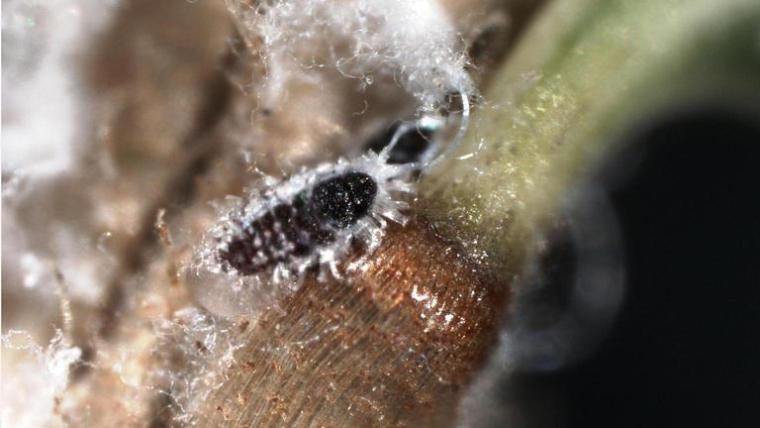
In a nutshell
Hemlock woolly adelgid (Adelges tsugae or HWA), is an introduced insect from Japan that has caused widespread decline and mortality in eastern and Carolina hemlock trees across the Eastern U.S. Controlling the spread of these insects is critical to the persistence of hemlock forests. One method used for HWA control is by using specialist predators: a beetle and two fly species. These predators are released when HWA insects are emerging from summer dormancy in early fall and again when they are laying eggs in late winter. Accordingly, managers need to know when HWA will be emerging from summer dormancy and laying eggs.
Authors of this study engaged Nature’s Notebook observers to collect data on the timing of these two life cycle stages of HWA in multiple states in the Northeast. The authors found that emergence of HWA from summer dormancy was consistent, starting at the end of September in each year of the study, while the start of egg laying in late winter was much more variable.
What is special about this study?
This study was possible due to the increased capacity for data collection brought by Nature’s Notebook observers. This study demonstrates the value that volunteer scientists bring to research and management activities, especially when they can work alongside researchers to collect high quality data.
What does this mean for YOU?
Hemlock is a long-lived foundation species in the eastern U.S., providing shade and winter cover as well as food and habitat for wildlife. The loss of this tree has cascading impacts on a variety of species. Better knowledge of when to take management actions to reduce HWA will help preserve hemlocks.
Citation: Dietschler, N.J., T.D. Bittner, M.B. Lefebvre, J. Schmidt, C.S. Jubb, A. James, S.M. Salom, M.C. Whitmore. 2024. Observation of key phenological stages of hemlock woolly adelgid (Hemiptera: Adelgidae): using citizen science as a tool to inform research and management. Journal of Economic Entomology. doi.org/10.1093/jee/toae056